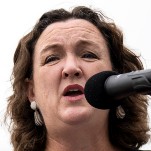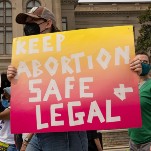One Year After Delhi Bus Rape, India Struggles to Advance Women
LatestMonday marked one year since the horrific rape and murder of the 23-year-old physiotherapy intern in New Delhi, India. The tragedy catapulted the topic of rape into everyday Indian life and shed undeniable light on the other ways Indian society oppresses women. For the first time India, its government and its society were forced to deal with the widespread culture of subjugating women that ranges from female feticide to residual dowry customs to missing children.
For the past year, India has been scrambling to address sexual assault and promote women’s rights in face of rising rape statistics while also recoiling into conservative “family-oriented” values. And while justice for Nirbhaya (one of the many names given to the Delhi victim by the media) and other victims of rape and sexual harassment may be on the horizon, the abysmal disconnect between policy and enacting that policy leaves far too many women, particularly those in extreme poverty, hanging.
Here is a comprehensive timeline of events regarding the rape case, responses, and Indian governmental decisions regarding women, safety, and human rights.
December 16, 2012—23-year-old Nirbhaya and her 29-year-old male friend board a private bus in southern New Delhi. The bus had been illegally commandeered by six men who had beat the man with a metal rod, and raped Nirbhaya. They also used the rod to penetrate her, leaving her with critical injuries to her genitals and uterus and permanent damage to her intestines. After nearly one and a half hours, they dumped the pair on the side of the road, partially clothed.
December 21—Mass protests sweep across India, demanding justice for the Nirbhaya. Protesters are met with riot police water canons, batons, and tear gas as a curfew is enacted.
December 23—Indian government appoints three-person Justice Verma Committee (JVC) to recommend changes to criminal law to more effectively address rape.
December 24—Three police officers are suspended for negligence after it is discovered they dismissed a man who was picked up, robbed by, and dropped off by the same six men just before Nirbhaya and her friend boarded the same bus.
December 29—Nirbhaya dies of injuries in a Singapore hospital, sparking more protests.
January 3, 2013—Charges filed against 5 suspects (the sixth is deemed a minor).
-

-

-

-

-

-

-

-

-

-

-

-

-

-

-

-

-

-

-

-

-

-

-

-

-

-

-

-

-

-

-

-

-

-

-

-

-

-

-

-








































